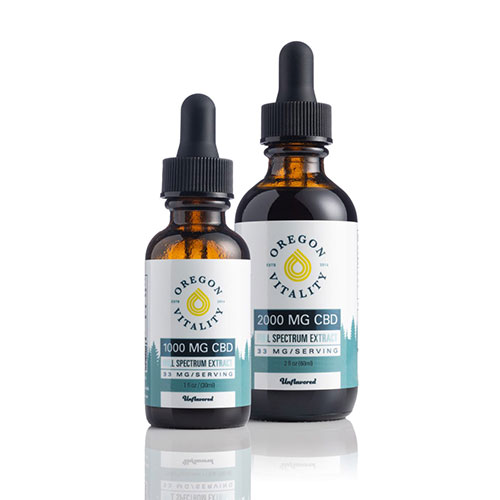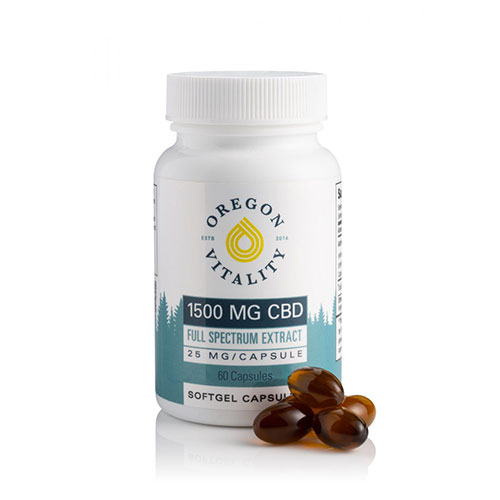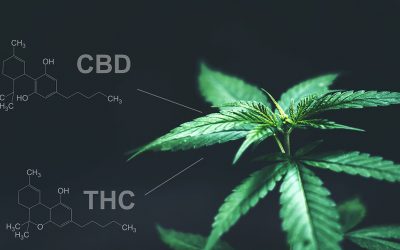Hemp (Cannabis sp.) is known for its utility when it comes to recreational/commercial products, specifically CBD, but did you know that it is also good for the environment?
Let’s explore some of the ways this genus of plants can help the environment.
1. Removes Toxins from the Soil
 Phytoremediation is “the treatment of pollutants or waste (as in contaminated soil or groundwater) by the use of green plants that remove, degrade, or stabilize the undesirable substances (such as toxic metals)” (7).
Phytoremediation is “the treatment of pollutants or waste (as in contaminated soil or groundwater) by the use of green plants that remove, degrade, or stabilize the undesirable substances (such as toxic metals)” (7).
This term was coined by the scientist Ilya Raskin, a member of a team that tested hemp’s ability to accumulate heavy metals from soil in contaminated fields near Chernobyl in the 1990s (2).
Cannabis sp. is a great choice for phytoremediation because it has roots that can be 1.5-3ft long. This allows the plant to get more than just the surface layer of the soil cleaned for more widespread contamination.
While hemp will not completely clear the soil in one crop, the plant is not damaged by heavy metals so it can then be used after harvest for non-consumable products (3).
The study by Citterio, et al. showed that the metals were also mainly kept in the parts of the plant that were below ground, leaving the upper parts mostly clear of the metals. These products could be things like “hemp-crete”, plywood, or energy via biofuel.
And since multiple crops can be grown each season, the phytoremediation effect is compounded.
2. Helps Battle Climate Change
Another term to be aware of is carbon sequestration: “Carbon sequestration is the process of capturing and storing atmospheric carbon dioxide” (8).
This is a very important concept as we move forward in the 21st century and continue to experience climate change via increased levels of CO2 in our atmosphere.
In the hemp industry, carbon sequestration is achieved when a plant pulls C02 from the air through the process of photosynthesis and stores it as lignin in their trunks, roots and branches. This means that Cannabis sp. is able to turn CO2, from the atmosphere, into a very stable form of elemental carbon in the soil and in its fibers. This is also known as ‘carbon sink’.
It is estimated that one hectare of industrial hemp can absorb 22 tonnes of CO2 per hectare (9). That CO2 then stays in the plants fibers and out of the atmosphere even when it is processed into non-consumable commercial products like building materials for a new home.
Hemp has an unmatched ability to remove CO2 from the air.
Hemp’s rapid growth makes it one of the fastest CO2-to-biomass conversion tools available. If the climate where the crop is being grown allows for two crops a year then this significant power as a carbon sink can potentially be doubled.
Hemp has an unmatched ability to remove CO2 from the air (9).
Between phytoremediation and carbon sequestration, Cannabis sp. is purifying our atmosphere and our soils, actively fighting climate change.
3. Replaces Tree Harvest
As we move further into the 21st century we are seeing the effects of tree loss on our climate and the environment. Hemp can help us with this. Many scientists are stating that they believe we could lose the Amazon rainforest within 100 years (4). While it can take trees 30-60 years to mature to the point they are viable for harvesting, it takes hemp only four months. Therefore, these plants could be used to offset the amount of trees being cut down for use in paper and construction(1, 5). Which means that the trees can stay where they are and continue their CO2 consumption (9).
With concern about the environment only continuing to increase, the use of industrial hemp as a replacement for wood is an obvious choice. Cannabis sp. grows quickly (120 days), can be grown year after year, helps clean and improve soil quality, removes carbon dioxide from the air, and when it is harvested the environment/habitat around it is not destroyed (6, 9). Industrial hemp is helping the environment while also being a strong economic choice.
Industrial hemp could significantly reduce the amount of trees being cut down for fiber used in paper.
The price for wood fiber is going to continue to increase, while the availability is going to continue to decrease (1). This is where industrial hemp can step in and take over the burden that has been placed on the wood industry. It can create stronger composite construction products than wood can and can be a like for like substitution for wood chips (1).
Industrial hemp could significantly reduce the amount of trees being cut down for fiber used in paper. Not only does the fiber create a higher quality paper, it can also be recycled quite a few times more than paper made from wood pulp (1, 9). Thus decreasing the amount of paper being made in the first place.
Hemp Helps
Industrial hemp can be used in such a wide variety of ways. We need to move away from seeing it as just the sister plant to marijuana and see it in its own light.
These plants can help us not only in our own bodies, our animals, and our aim to embrace alternatives, but it can also help us to heal some of the damage done to the earth.
Through processes like phytoremediation and carbon sequestration as well as providing a way to leave trees in the forest, industrial hemp is making a difference.
Here at Oregon Vitality, we highly value anything that helps the environment and ourselves to be a little better every day than we were the day before.
Sources:
- Andy Kerr | Oregon Conservationist, Writer, Analyst, Operative, Agitator, Strategist, Tactician, Schmoozer, Raconteur. 1998. Hemp Replacing Wood. [online] Available at: [Accessed 23 April 2021].
- Beans, C., 2017. Core Concept: Phytoremediation advances in the lab but lags in the field. Proceedings of the National Academy of Sciences, 114(29), pp.7475-7477.
- Citterio, S., Santagostino, A., Fumagalli, P. et al. Heavy metal tolerance and accumulation of Cd, Cr and Ni by Cannabis sativa L.. Plant and Soil 256, 243–252 (2003). https://doi.org/10.1023/A:1026113905129
- Environment. 2021. Rain Forest Threats Information and Facts. [online] Available at: [Accessed 21 April 2021].
- Good Hemp. 2021. The Environmental Benefits of Hemp | Blog | Good Hemp. [online] Available at: [Accessed 21 April 2021].
- Hammon, D., 2021. HempWood offers a sustainable wood alternative with endless applications. [online] Inhabitat.com. Available at: [Accessed 23 April 2021].
- Merriam-webster.com. 2021. Definition of PHYTOREMEDIATION. [online] Available at: [Accessed 21 April 2021].
- Usgs.gov. 2021. What is carbon sequestration?. [online] Available at: [Accessed 21 April 2021].
- Vosper, J., 2021. The Role of Industrial Hemp in Carbon Farming. [online] Hemp-copenhagen.com. Available at: [Accessed 21 April 2021].
You might also be interested in
How to Dose CBD for Pets
How to Dose CBD for PetsWritten by JC Riggs and Jennifer HoosonAre you considering using a CBD product like our Full Spectrum Tinctures or Pure CBD...
Does THC make a difference? Learn about Full Spectrum vs CBD Only
Does THC make a difference? Learn About Full Spectrum vs CBD Only:Written by JC Riggs and Jennifer HoosonCannabidiol (CBD) products are taking off...
Huge Discounts for Heroes: Oregon Vitality’s Heroes Program
Written by Jennifer Hooson | Reviewed by JC Riggs Who is a hero to you? What does it mean to be a hero? For us, heroes are those who look each day...








0 Comments